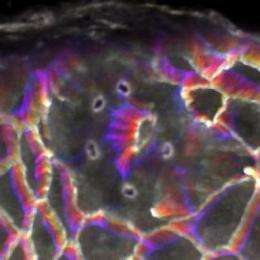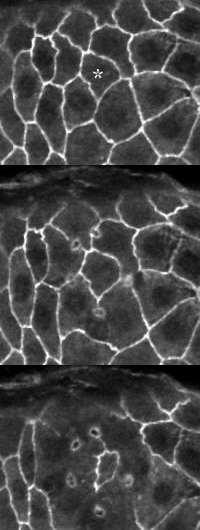Using lasers to vaporize tissue at multiple points simultaneously

Researchers at Vanderbilt University have developed a new technique that uses a single UV laser pulse to zap away biological tissue at multiple points simultaneously, a method that could help scientists study the mechanical forces at work as organisms grow and change shape.
UV lasers are a commonly-used tool for cutting into tissue, but the lasers usually make incisions by vaporizing one point at a time in a series of steps. If the initial laser pulse cuts into cells under tension, the tissue could spring back from the incision. This makes precise tasks, such as cutting around a single cell, difficult. The Vanderbilt team found a way around this problem by using a computer-controlled hologram to shape the phase profile of the UV pulse –basically applying a patterned delay onto different parts of the beam. When the pulse then passed through a lens, the altered phase profile yielded an interference pattern with bright spots at any user-desired pattern of points. Using this method, which can vaporize up to 30 points simultaneously, the researchers successfully isolated a single cell on a developing fruit fly embryo and then observed how the cell relaxed into a shape dictated solely by internal forces.

The technique, described in the September issue of the Optical Society's (OSA) open-access journal Biomedical Optics Express, could be applied to other model organisms, such as frogs or zebra fish, to help answer outstanding questions in developmental biology. This knowledge may in turn guide bioengineers searching for ways to grow designer tissue.
More information: "Holographic UV laser microsurgery," Jayasinghe et al., Biomedical Optics Express, Vol. 2, Issue 9, pp. 2590-2599. www.opticsinfobase.org/boe/abs … cfm?uri=boe-2-9-2590
Provided by Optical Society of America
















